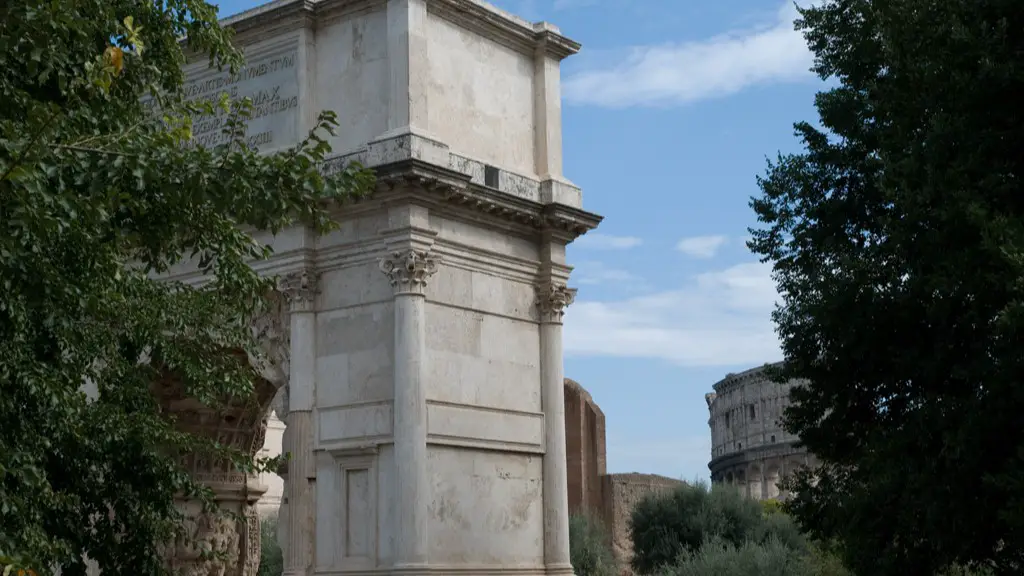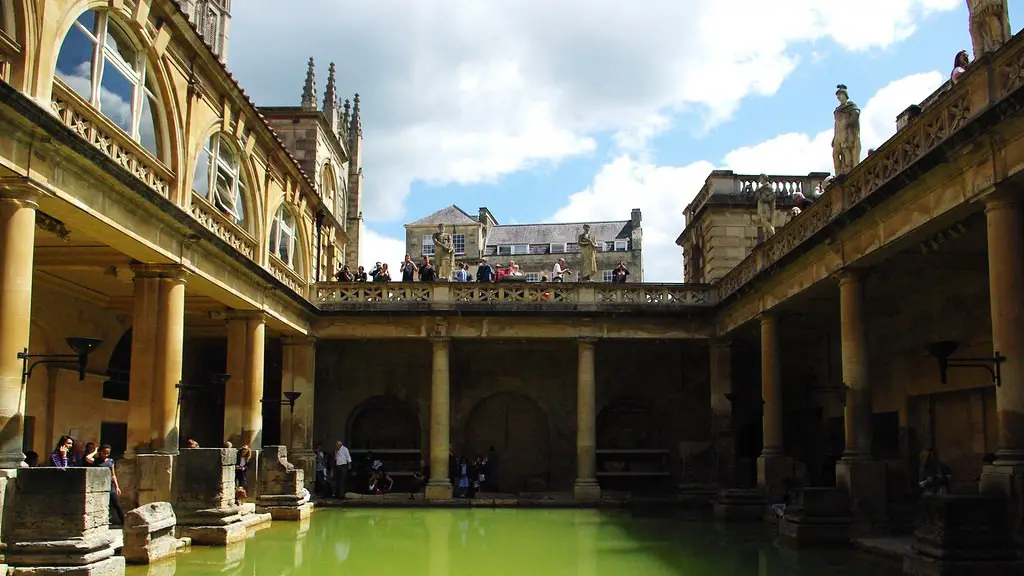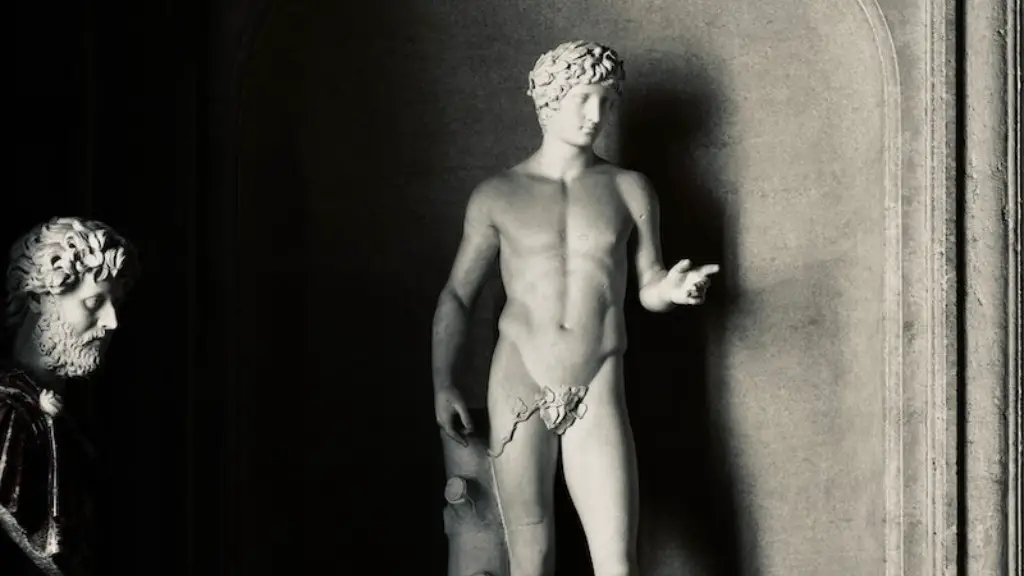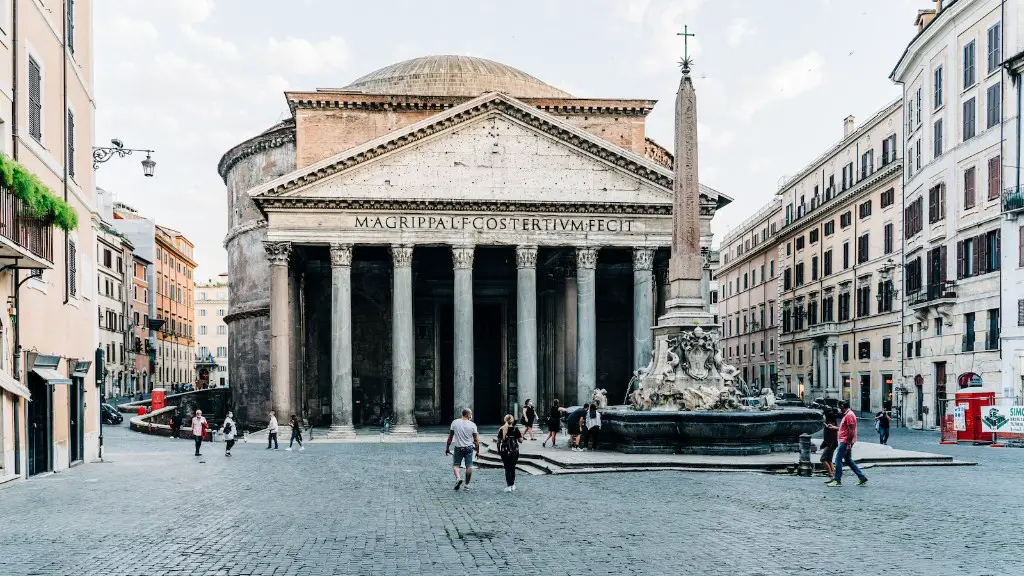The use of cups in ancient Rome is well-documented, with many examples of cups and their shapes, materials, forms, and decorations having been found during archaeological excavations. Cups were used for various purposes, from drinking to even being used as decorative items. Ancient Romans mainly used clay, glass and silver cups for drinking. But what type of cups were being used in ancient Rome?
In Roman households, clay cups were most commonly used. Archaeologists have discovered that these were made out of pottery or terracotta. These were simple cups with a flaring rim and a pointed bottom. They were mainly used for drinking wines and were made in different shapes and sizes to suit individual needs. Clay cups were also often decorated with a variety of designs, such as figures and motifs.
Glass cups were another popular choice among the Romans. They were often made using a combination of sand and lead oxide. Glass cups could also be decorated with designs, making them a popular choice for decorative items as well. These cups had a wide variety of shapes and sizes, from simple round cups to intricate and ornate designs, depending on the time period. Glass cups were mainly used for drinking wine and were usually quite expensive, as glass was a rare commodity in ancient Rome.
Silver cups were also used in Roman households and were usually among the most expensive of all cups. These often had intricate designs on them, such as scenes from Roman mythology, and were mainly used for decorative purposes. Silver cups were mainly used for ceremonial purposes and were only given to the most distinguished guests.
In addition to these three common types of cups, other materials were also used in making cups, such as gold, ivory, and bronze. While these were much rarer and more expensive, they were also mainly used for decorative purposes. As such, they were mainly used by the wealthier classes and by those of high social standing.
Thus, it can be seen that the Romans had a wide variety of cups to choose from, depending on the purpose and the occasion. Clay cups were mainly used for everyday use, while glass and silver cups were mainly used for more special occasions. Other materials, such as gold, ivory and bronze, were also used for decorative purposes. In this way, the Romans had a great range of cups to choose from, making sure that there was something for every occasion.
Cups Used in Celebrations
The type of cups used by the Romans in celebrations would vary according to the status of the host and the occasion. For more formal occasions, such as birthdays and weddings, silver and gold cups would be used. These were usually highly decorated, often with figures and motifs from Roman mythology. On less formal occasions, such as dinner parties, clay or glass cups would be used. These were typically decorated with less elaborate designs.
Glass cups were also used in certain rituals, such as the popular tradition of ‘the drinking of the cup.’ This was practiced in various forms during the ceremonies of various cults. This ritual would involve the participants drinking out of a single cup, usually made from glass, which had been consecrated for the purpose. This tradition was seen as a form of bonding between participants, and was intended to signify unity.
The use of cups in religious ceremonies was also common. During such ceremonies, holy objects would often be placed in a cup and then passed around in order to be shared among the members of the ritual. This practice was seen as a way of reinforcing the bonds between the worshippers and their religion.
The Importance of Cups in Ancient Rome
Cups were an important part of ancient Roman life, being used not just for drinking or decorative purposes, but also in rituals, celebrations and religious ceremonies. The use of cups in ancient Rome spanned many aspects of life and was an integral part of the culture. This can be seen in the variety of cups that were used and in the way that cups were used in various rituals and ceremonies
Cups were also a symbol of wealth and status in ancient Rome. The use of more expensive materials such as gold, silver and bronze for making cups signified the wealth and social standing of the owner. In this way, the use of cups was an important part of the social hierarchy and depicted the various positions of each individual in society.
The Artistry of Ancient Roman Cups
The cups used in ancient Rome were often highly decorated with a variety of designs and motifs. These designs were created by skilled artists and were intended to convey messages or convey the wealth of the owner. For example, some designs were meant to reflect the Roman pantheon and were created to honor the gods. Other designs were simply decorative and were intended to bring joy or happiness to the owner of the cup.
The decorations found on ancient Roman cups also reveal much about the culture of the time. These decorations often depicted scenes from Roman mythology, as well as motifs and symbols from nature. By studying these decorations, we can gain an insight into the beliefs and values of the ancient Roman people.
In this way, the cups used in ancient Rome were more than just vessels for holding liquids. They were symbols of status and wealth, artistry, and even a means of expressing the beliefs and values of the time. This makes them an important part of the history of ancient Rome, as a vivid reminder of the culture and lifestyle of the people who used them.
Legacy of the Ancient Roman Cup
The cups used in ancient Rome have left a lasting legacy on the way we use and interact with cups today. From the various materials and decorations used to the way that cups were used in rituals and celebrations, many of these traditions are still practiced today. In this way, the ancient Roman cup has had an impact on modern-day life and continues to inspire us.
The use of cups in ancient Rome reflects the importance of the item in the culture. Cups were not just simple vessels for holding liquids, but symbols of wealth and status, artistry, and a means of expressing beliefs and values. As such, they were an important part of the culture and a vivid reminder of the people who used them.
This legacy continues today, and cups are still used in many of the same ways as they were in ancient Rome. From serving drinks at special occasions to religious ceremonies to even just as an everyday item, cups continue to play a vital role in our lives. The legacy of the ancient Roman cup still lives on in the way we think about and use them today.
The Impact of Ancient Roman Cups on Today’s Culture
The legacy of the ancient Roman cup is evident in many aspects of today’s culture. For example, the use of cups in religious ceremonies is still very popular, with cups of various materials, such as silver and glass, being used to share the wine or water used in the rituals. Additionally, cups are still heavily used in special occasions such as weddings, birthdays, and other celebrations.
The artistry of ancient Roman cups is also still evident in modern-day cups, with a plethora of designs and motifs still being used for decorative purposes. The use of cups as a symbol of status and wealth is also still very evident, with more expensive materials, such as silver and gold, being used in certain occasions.
In this way, it can be seen that the legacy of the ancient Roman cup still very much lives on in today’s culture. From its use in religious ceremonies to its artistry, modern-day cups are a reflection of the legacy of the ancient Roman cup.
Conclusion
Ancient Roman cups have a long and varied legacy. From their use for everyday drinking to their use in religious rituals and ceremonies, cups were an integral part of the culture. This legacy is still evident today, with cups still being used in much the same way as they were in ancient Rome. The decorations and artistry of ancient Roman cups also continue to inspire modern-day cups and the decorations that are used on them. In this way, ancient Roman cups have had and will continue to have a lasting impact on our culture.





